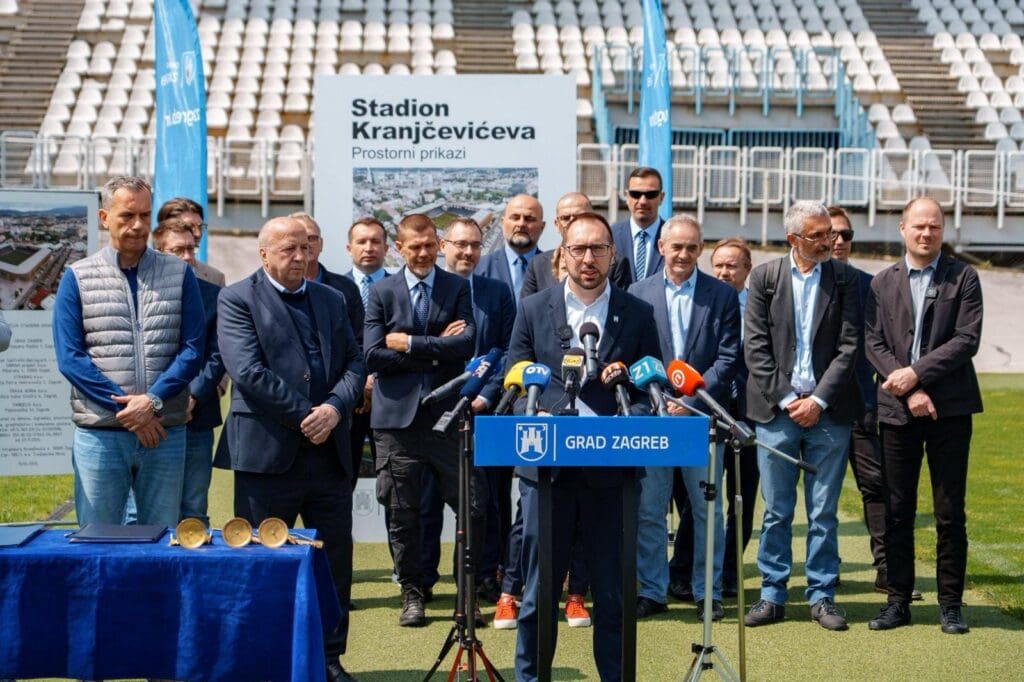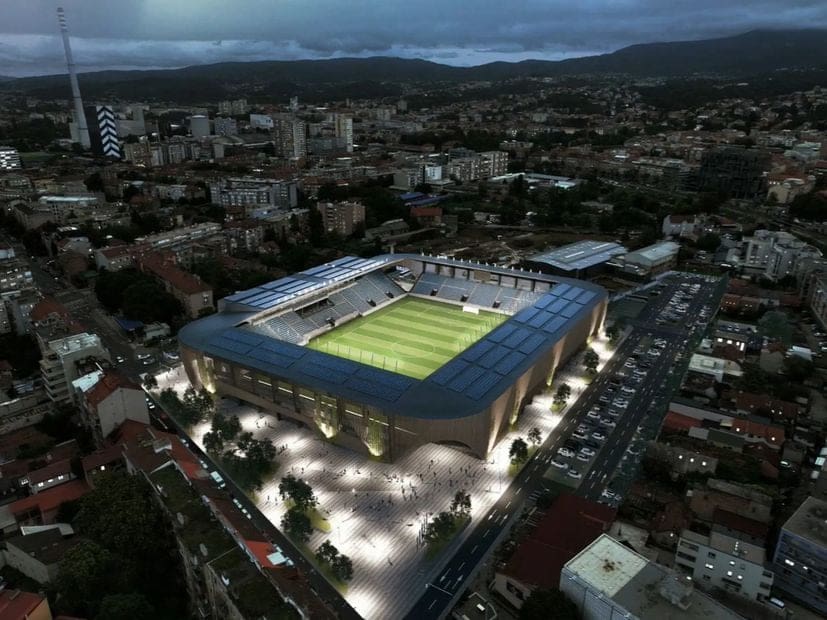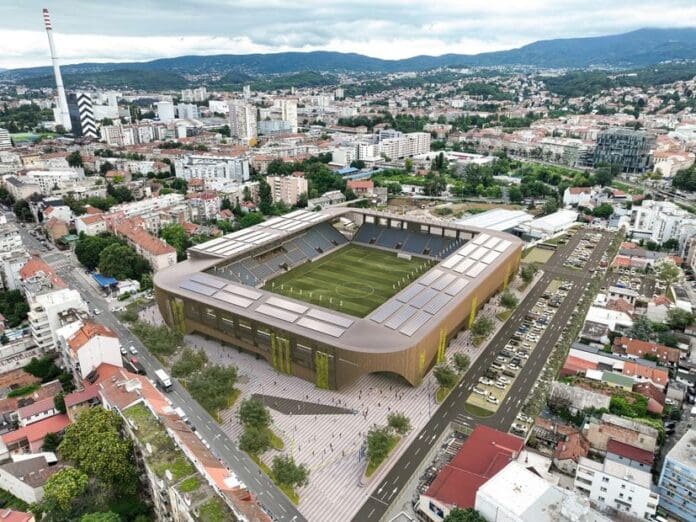Marko Barišić: Croatia has launched a transformative stadium redevelopment wave. It begins with Zagreb’s new 12,000-seat UEFA Category 4 arena near the Cibona Tower. Dinamo Zagreb’s relocation from historic Maksimir Stadium paves the way for a modern 35,000-capacity venue.
A new chapter for Zagreb’s football infrastructure
In Zagreb on Monday, the cornerstone was laid for the construction of a new football stadium. Located in the heart of the city near the iconic Cibona Tower on Kranjčevićeva Street, the project marks a significant milestone.
The construction deadline is set at one and a half years. Thus, the stadium should be completed by the end of 2026. Costing €44 million, it will meet UEFA Category 4 standards, enabling it to host Champions League matches.

Features and implications of the new stadium
With a capacity of up to 12,000 spectators, the stadium will be roofed. It will feature a heated pitch and exclude an athletics track. Its completion will see Dinamo Zagreb relocate from their historic Maksimir Stadium.
Once Dinamo vacates Maksimir, the legendary venue—where the Croatian national team and Dinamo have celebrated numerous triumphs—will be demolished to make way for a new stadium.

The future of Maksimir Stadium
The new Maksimir Stadium is slated for completion within 2.5 years. Boasting a 35,000-seat capacity, it will finally provide Dinamo and the Croatian national team, still led by the invincible Luka Modrić, with a modern arena befitting their stature.
By 2029, when Dinamo returns to Maksimir, Lokomotiva Zagreb will move into the Kranjčevićeva Street stadium. This club is renowned for nurturing talents who later join larger Croatian or international teams.
Renovations and developments across Croatia
Simultaneously, the renovation of Hajduk Split’s Poljud Stadium will commence. Built over 30 years ago, the iconic seashell-shaped roof requires urgent repairs, including panel replacements. Debates persist over whether to retain its athletics track or expand seating to enhance the football atmosphere.

Osijek and Rijeka’s stadium progress
Osijek recently unveiled a stunning 15,000-seat stadium along the Drava River. It is complemented by top-tier training facilities for its famed football academy, which produced legends like Davor Šuker, former Real Madrid star and Croatian international.
Rijeka, meanwhile, awaits the construction of its new stadium at Kantrida. The current Rujevica facility is temporary, pending the development of a unique venue. It will be partly embedded into a hillside and adjacent to the sea.
Croatia’s national team camp in Velika Gorica
Construction has also begun on the Croatian national team’s €15 million training camp in Velika Gorica, near Zagreb. Slated for completion in 2027, the facility will provide world-class amenities for the squad.
A long-overdue transformation
After years of delay, Croatia’s clubs and national team are finally gaining worthy sporting arenas. This is evidenced by their second and third-place finishes at the last two World Cups. They have consistently competed among Europe’s and the world’s elite.
The first step towards this renaissance, eagerly anticipated by all, has been taken. The Kranjčevićeva Street project is now underway, paving the way for a new Maksimir.
For more details visit Grad Zagreb.

